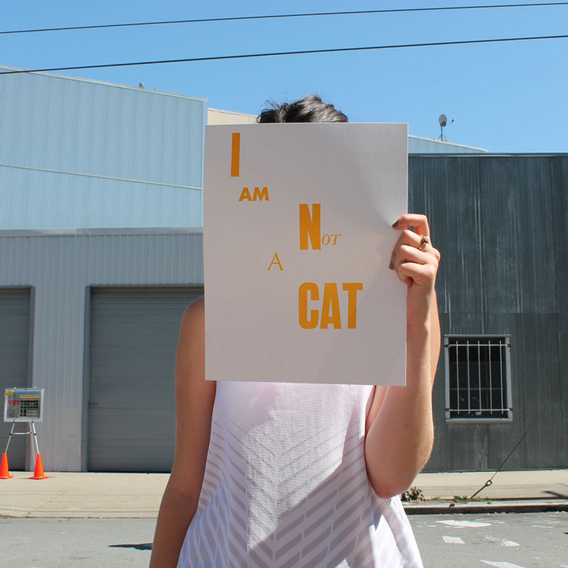
Made in L.A. 2014. Works by Jennifer Moon. Installation view at the Hammer Museum, Los Angeles.. Photography by Brian Forrest.
1. “Chris Kraus on the Ambiguous Virtues of Art School” by Chris Kraus, Artspace Magazine
Excerpted from Phaidon’s Akademie X: Lessons in Art & Life, Kraus’s essay welds together the personal, political, and theoretical into what amounts to a fascinating new framework through which to consider the emergent, increasingly uncategorizable genres of art taking shape in the nation’s art schools.
2. “The Color of Context” by Nikki Darling, Los Angeles Review of Books
A reply to criticism leveled at “Made in LA 2014,” the Hammer museum’s biennial, Darling’s piece takes on the question of what real “diversity” in art might mean: “Is the goal to include more artists of color in the city’s museums, or is it to make room for a certain type of artist of color, while ignoring the ethnicity of others who don’t outwardly fit this mold?”
3. “Duty-Free Art” by Hito Steyerl, e-Flux Journal
An artful, unsettling essay on the ways that contemporary art has become an instrument of the powerful, this essay is ingeniously structured around Steyerl’s investigation of WikiLeaks’s trove of (unverified, unverifiable) documents relating to OMA’s 2010 plan for a museum in Syria funded by the Assad regime.
4. “How Mark Leckey Became the Artist of the YouTube Generation” by Charlotte Higgins, The Guardian
Passing through his flamboyant, unattached early days and works such as the cult video Fiorucci Made me Hardcore (embedded above), this examination of the career of the difficult-to-classify Mark Leckey really becomes a way to capture an entire post-ironic, post-medium, ultra-contemporary sensibility.
5. “I Got Kicked Off of Facebook for Posting Images of Medieval Art” by Jerry Saltz, New York Magazine
There will eventually be a documentary made about the adventures of the US’s most famous art critic. And when that happens, one episode will be on his confrontation with his fans over the posting of bawdy art to social media, which briefly got him ejected from Facebook earlier this month.
Photo from Mirabelle Jones’s I Am Not a Cat project
Photo: Courtesy http://www.mirabellejones.com/
6. “Indecent Intentions: Street Harassment and Contemporary Art” by Ashton Cooper, Pelican Bomb
An edifying digest of the ways artists from Adrian Piper to Mirabelle Jones have used art to challenge catcallers, in the gallery and in the street.
7. “No One Cares About Art Criticism: Advocating for an Embodiment of the Avant Garde as an Alternative to Capitalism” by Steven Cottingham, Temporary Art Review
Via copious and wonderful examples, Cottingham makes the case for a creative turn in contemporary art writing, including his own great idea of turning a transcript of what people really talk about at a gallery opening into a work of found-word criticism.
8. “Tuning Out Digital Buzz, for an Intimate Communion With Art” by Holland Cotter, New York Times
Digital transformation of the art experience is the theme of the day (see also Red Hook journal’s great March issue on “Art Publishing & the Web,” edited by Orit Gat). Cotter weighs in with a sensitive, experiential account of what is lost in the transition to the screen—partly inspiring my own essay, Is the iPhone a Blessing or a Curse for Art?
Installation view of Kehinde Wiley works at the Brooklyn Museum.
Photo: JongHeon Martin Kim. Courtesy the Brooklyn Museum.
9. “What to Make of the Village Voice’s Offensive Kehinde Wiley Review?” by Jillian Steinhauer, Hyperallergic
We can disagree on the merits of Kehinde Wiley’s art, but Jessica Dawson’s Village Voice review accusing the artist of being “pervy” and “predatory” read as inexplicably homophobic, and deserved righteous rebuttal. Steinhauer delivers.
10. “Write On” by Gilda Williams, Art Monthly
The acute Art Monthly is one of my favorite art mags, though one I can’t usually cite here because it is not really online. Rejoice, then, at the chance to read this great essay postulating that it is time to ditch the “crisis of criticism” angst and appreciate what she hypothesizes as a mini renaissance of innovative art writing. (Williams is the author of How to Write About Contemporary Art, so she’s equipped to judge).